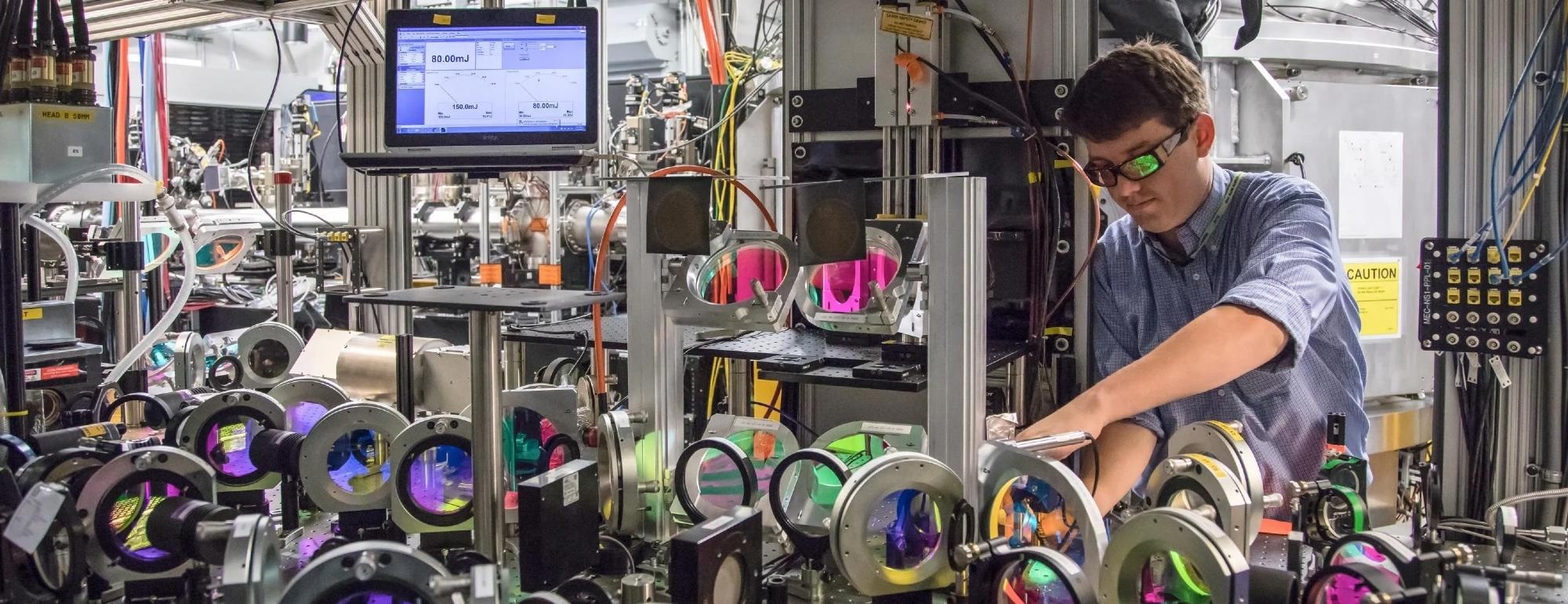The DOE’s SLAC National Accelerator Laboratory and Stanford University will collaborate with Colorado State University (CSU), Lawrence Livermore National Laboratory (LLNL), and other institutions to establish two inertial fusion science and technology hubs.
 SLAC will bring laser and target expertise to two national fusion energy hubs that aim to advance foundational inertial fusion research and technology toward a potential source of clean and abundant energy. Image Credit: Dawn Harmer/SLAC National Accelerator Laboratory
SLAC will bring laser and target expertise to two national fusion energy hubs that aim to advance foundational inertial fusion research and technology toward a potential source of clean and abundant energy. Image Credit: Dawn Harmer/SLAC National Accelerator Laboratory
Following up on LLNL’s National Ignition Facility’s fusion ignition achievement last year, the hubs seek to speed basic inertial fusion research and technology development toward a possible clean and plentiful energy source. Under the DOE’s Inertial Fusion Energy Science & Technology Accelerator Research (IFE-STAR) program, $42 million was allocated to collaborations between universities, national labs, and industry partners.
According to SLAC and Stanford professor Siegfried Glenzer, deputy director of the internal fusion science and technology RISE hub, led by CSU and co-led by SLAC, the objective is to develop laser and target systems that can fire more frequently and produce more energy now that inertial fusion energy gain has been scientifically demonstrated.
Because of the lab’s experience in designing and running high-repetition-rate X-Ray laser experiments at the Linac Coherent Light Source (LCLS), SLAC is in a unique position to assist in achieving that aim. In addition to developing targets, RISE will investigate designs for inertial fusion energy ideas and study laser fusion driver theory and tests.
The Science & Technology Accelerated Research for Fusion Innovation & Reactor Engineering (STARFIRE) hub, led by LLNL, aims to create solid-state laser technologies, high-gain target designs, and target production. Alan Fry, project director for SLAC’s Matter in Extreme Conditions Petawatt Upgrade (MEC-U), stated that SLAC will supply comprehensive system requirements for several inertial fusion energy ideas as part of the STARFIRE hub.
The requirements closely align with those developed for the high-repetition-rate MEC-U laser, which will facilitate basic fusion research and technology and be connected to LCLS.
The hubs create large, multi-institutional teams that collaborate with businesses and institutions to engage students and build the workforce of the future. With the help of a four-year $16 million grant, RISE has brought together specialists from three firms, two national labs in the United States, five universities, and a federal lab.
With a grant of $16 million over four years, STARFIRE unites seven institutions, four national laboratories in the United States, one lab abroad, three commercial organizations, one charitable organization, and three private enterprises.
LCLS is a national user facility of the DOE Office of Science. The DOE Office of Science Fusion Energy Sciences Program funds IFE-STAR.